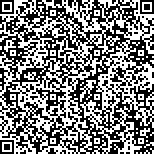| 引用本文: | 乌日汉,毕力格,丽丽,陈玉花,肖田梅,斯日古楞,韩晓静,白梅荣.基于16S rDNA序列测序的川楝子肝毒性机制研究[J].中国现代应用药学,2022,39(16):2069-2074. |
| WU Rihan,BI Lige,Lili,CHEN Yuhua,XIAO Tianmei,Sirguleng,HAN Xiaojing,BAI Meirong.Study on Hepatotoxicity Mechanism of Toosendan Fructus Based on 16S rDNA Sequencing[J].Chin J Mod Appl Pharm(中国现代应用药学),2022,39(16):2069-2074. |
|
| |
|
|
| 本文已被:浏览 1446次 下载 850次 |

码上扫一扫! |
|
|
| 基于16S rDNA序列测序的川楝子肝毒性机制研究 |
|
乌日汉1, 毕力格1, 丽丽1, 陈玉花2, 肖田梅2, 斯日古楞3, 韩晓静1, 白梅荣1
|
|
1.内蒙古民族大学 蒙医药研发工程教育部重点实验室, 内蒙古 通辽 028000;2.内蒙古民族大学 化学与材料学院, 内蒙古 通辽 028000;3.内蒙古通辽市医院, 内蒙古 通辽 028000
|
|
| 摘要: |
| 目的 通过观察川楝子对大鼠肠道菌群的影响,初步探讨川楝子肝毒性机制。方法 以大鼠为研究对象,川楝子组灌胃川楝子溶液,连续给予21 d,末次给药后收集粪便样本,抽提粪便DNA,于Illumina MiSeq分析平台进行16S rDNA测序。结果 川楝子显著提高血清谷草转氨酶(aspartate aminotransferase,AST)、谷丙转氨酶(alanine aminotransferase,ALT)含量(P<0.05),降低总胆固醇(total cholesterol,CHO)、总蛋白(total protein,TP)含量(P<0.05)。菌群多样性分析和差异分析结果显示,川楝子降低大鼠肠道菌群多样性,可升高肠道厚壁菌门、放线菌门、杆菌、丹毒丝菌、乳杆菌属丰度;可显著降低梭菌、拟杆菌、瘤胃球菌属丰度。关联性分析显示,ALT和AST含量与双歧杆菌属、瘤胃球菌、粪球菌、脱硫弧菌、罗氏菌、梭菌、拟杆菌丰度显著相关;CHO、TP与普雷沃菌、密螺旋体、气球菌丰度显著相关。结论 川楝子能明显降低肠道菌群的多样性,其肝脏毒性机制可能与增加Allobaculum和丹毒丝菌的表达有关。 |
| 关键词: 肠道菌群 川楝子 16S rDNA序列测序 肝毒性 |
| DOI:10.13748/j.cnki.issn1007-7693.2022.16.004 |
| 分类号:R284.1 |
| 基金项目:国家民委-教育部蒙医药研发重点实验室开放课题(MDK2019063);中央支持地方建设专项资金交叉学科建设项目(JCHXKXM001);内蒙古自治区2020年博士研究生科研创新资助项目(BZ2020076);蒙药安全性评价创新团队项目(MY20190003) |
|
| Study on Hepatotoxicity Mechanism of Toosendan Fructus Based on 16S rDNA Sequencing |
|
WU Rihan1, BI Lige1, Lili1, CHEN Yuhua2, XIAO Tianmei2, Sirguleng3, HAN Xiaojing1, BAI Meirong1
|
|
1.Key Laboratory of Mongolian Medicine Research and Development Engineering of Inner Mongolia Minzu University, Tongliao 028000, China;2.Chemistry and Materials College, Inner Mongolia Minzu University, Tongliao 028000, China;3.Tongliao City Hospital, Inner Mongolia, Tongliao 028000, China
|
| Abstract: |
| OBJECTIVE To preliminary study the mechanism of hepatotoxicity of Toosendan Fructus by observing the effect of Toosendan Fructus hepatotoxicity on intestinal flora of rats.METHODS Rats as the research objects,Toosendan Fructus group was given corresponding solution continuous administration for 21 d.The fecal samples were collected after the last dose of the drugs,extracted the fecal DNA.The sequencing analysis of 16S rDNA was conducted on the Illumina MiSeq platform.RESULTS The content of aspartate aminotransferase (AST) and alanine aminotransferase (ALT) in serum could be remarkably improved by Toosendan Fructus,the total cholesterol (CHO) and total protein (TP) were significantly decreased (P<0.05).The results of the analysis of microflora diversity and the differences showed that the diversity of intestinal flora in the Toosendan Fructus group was reduced,the abundance of Firmicutes,Actinobacteria,Bacilli,Erysipelotrichi,Lactobacillales were significantly increased,and Clostridia,Bacteroidia,Ruminococcaceae were obviously decreased.According to the correlation analysis,the content of ALT and AST in the serum were significantly correlated with the abundance of Bifidobacterium,Ruminococcus,Coprococcus,Desulfovibrio,Roseburia,Clostridia and Bacteroidia,while CHO and TP were significantly correlated with the Paraprevotella,Treponema,Aerococcus.CONCLUSION Toosendan Fructus can significantly reduce the diversity of intestinal flora,and its liver toxicity mechanism may be related to the increasing the number of Allobaculum and Erysipelotrichi. |
| Key words: intestinal flora Toosendan Fructus 16S rDNA sequencing liver toxicity |
|
|
|
|
